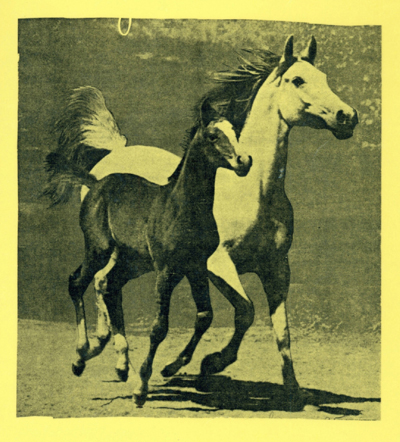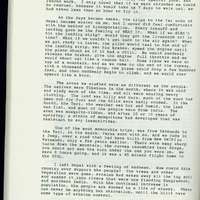140
Item
-
Title
-
140
-
Transcription
-
and is designed for short runways. They call it the (STOL), Short Take Off and Landing. The mission had helicopters that were used for some flights, but only for special jobs, and rescue work. I only hoped that if we were stranded we could be rescued, because it would take us 7 days to walk out, we had taken less than an hour to fly in.
As the days became weeks, the trips to the far ends of Nepal became easier on me, but I never did feel comfortable with the method of transportation. Every takeoff and landing gave me the feeling of WHAT IF. What if we didn't hit the landing strip? Would they get the livestock off in time? What if we couldn't get back in the air again? When we got ready to leave, the pilot would taxi to the end of the landing strip, set his brakes, speed the engine until the plane shook as if it had a chill. He would suddenly release the brakes, give the engine full throttle and we would shoot out like a cannon ball. Some times we were on top of a mountain, and as we came to the end of the runway, with a thousand foot drop, the plane would drop a few hundred feet, and then suddenly begin to climb, and we would soar upward like a bird.
The areas we studied were as different as the people. The natives were Tibetans in the north, where it was cold and windy much of the time, and all were wearing heavy clothing. The land was hilly and bare, much of the wood had been cut for fuel and the hills were badly eroded. In the South, the Teri, the weather was hot and humid, the land was flat, and most of the people were from India. The area was mosquito-ridden, and after 10 or 15 years of spraying, a strain of mosquitoes had developed that was resistant to any insecticides.
One of the most memorable trips, was from Katmandu to the Teri, in the south. Verna went with me, and we rode in a Jeep, over a road that had been built from New Delhi to Katmandu, only a few years earlier. There were many sharp turns down the mountain, the curves resembled tear drops, you could not see the turn under the one you were on. We were 8 hours going, and it was a 45 minute flight home in the STOL.
I left Nepal with a feeling of sadness. How could this country ever support the people? The trees and other vegetation were gone, erosion had eaten away all the top soil and washed it into rivers that were now flooding Bangladesh, and northern India. With the continual increase in population, the people are doomed to a life of misery. There can never be anything but starvation, until the hills have some type of erosion control.
-
Rights
-
To inquire about usage, please contact Archives & Special Collections, University of Nebraska-Lincoln Libraries. These images are for educational use only. Not all images are available for publication.
 Metzger Memories
Metzger Memories


